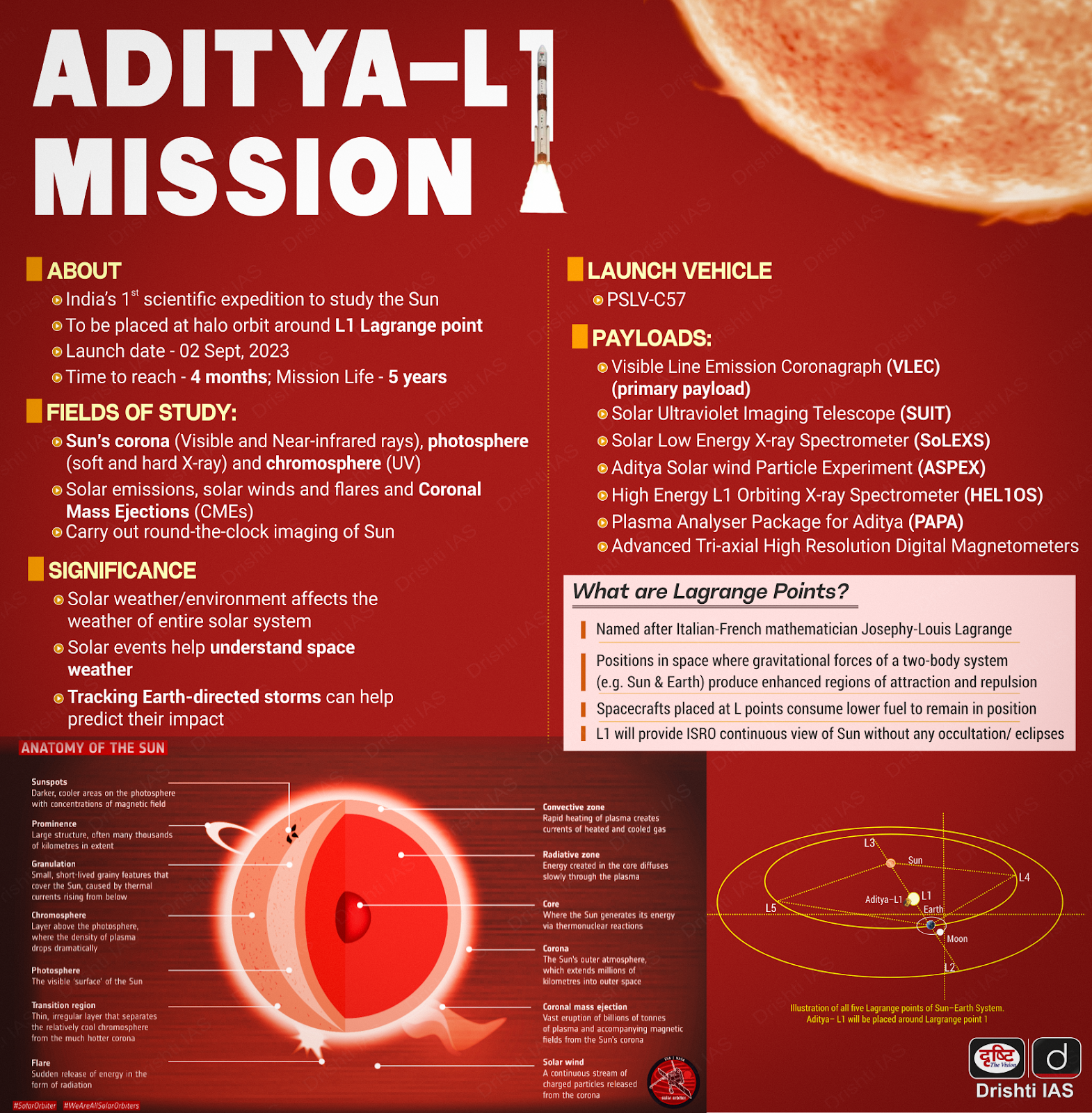-
08 Apr 2025
GS Paper 2
Science & Tech
Day 32: Discuss the core scientific objectives of India’s Aditya-L1 mission and evaluate its broader significance for space research, climate understanding, and technological advancement. (38 marks)
Approach
- Introduce briefly the Aditya L1 mission.
- Elaborate the objective of the mission and discuss its potential ramifications.
- Conclude suitably.
Introduction
The Aditya-L1 mission, launched by ISRO in 2023, is India’s first space-based solar observatory, aimed at deepening our understanding of the Sun and its influence on Earth. It marks a major step in India's scientific and space ambitions.
Body
Core Scientific Objectives of Aditya-L1 Mission:
- Solar Layer Observation: The mission aims to study the solar corona, chromosphere, photosphere, and solar wind dynamics, improving knowledge of solar atmospheric layers.
- Solar Activity Monitoring: It will observe solar flares, coronal mass ejections, and magnetic field variations, enabling insight into extreme solar events.
- Advanced Payloads: The spacecraft carries seven advanced payloads, including SUIT, VELC, and SoLEXS, designed to monitor various solar activities and electromagnetic radiation.
- L1 Advantage: Positioned at Lagrange Point 1 (L1), the satellite will enjoy continuous, unobstructed observation of the Sun, avoiding eclipses and Earth’s shadow.
- Climate Linkage: The mission will collect data on solar irradiance variability, contributing to climate models and weather predictions on Earth.
- Space Weather Research: Aditya-L1 will analyze space weather drivers, crucial for safeguarding satellites, GPS systems, and communication infrastructure from solar disturbances.
Broader Significance of the Mission:
- Impact Mitigation: The mission contributes to space weather forecasting, helping mitigate effects on power grids, aviation, and military communications.
- Astrophysics Research: It enhances global understanding of plasma physics, magnetic reconnection, and solar magnetic field generation, enriching astrophysics research.
- Early Warning Capability: Continuous observation from L1 supports early warning systems for geomagnetic storms, reducing risks to astronauts and spacecraft.
- Global Recognition: The success of Aditya-L1 positions India among a select group of nations with independent solar observatory capabilities, improving scientific stature globally.
- Fusion Energy Insights: Insights from the mission can aid in fusion energy research, as the Sun operates as a natural nuclear fusion reactor, inspiring sustainable energy innovation.
- Technological Advancement: Technologically, the mission showcases ISRO’s precision navigation, deep space communication, and payload miniaturization capabilities.
- Capacity Building: It provides hands-on experience in halo orbit operations and real-time solar monitoring, enhancing India’s expertise for future interplanetary missions.
- Cost Efficiency: The mission’s cost-effective execution through PSLV-C57 underlines India’s growing competence in affordable space science.
- Youth and Collaboration: It promotes academic and international collaboration in heliophysics, encouraging youth participation in advanced space research.
Conclusion
Aditya-L1 is not just a solar mission but a gateway to scientific breakthroughs, strategic resilience, and technological innovation. It strengthens India’s role in space exploration while offering actionable insights into Earth’s climate, energy futures, and planetary defense.





